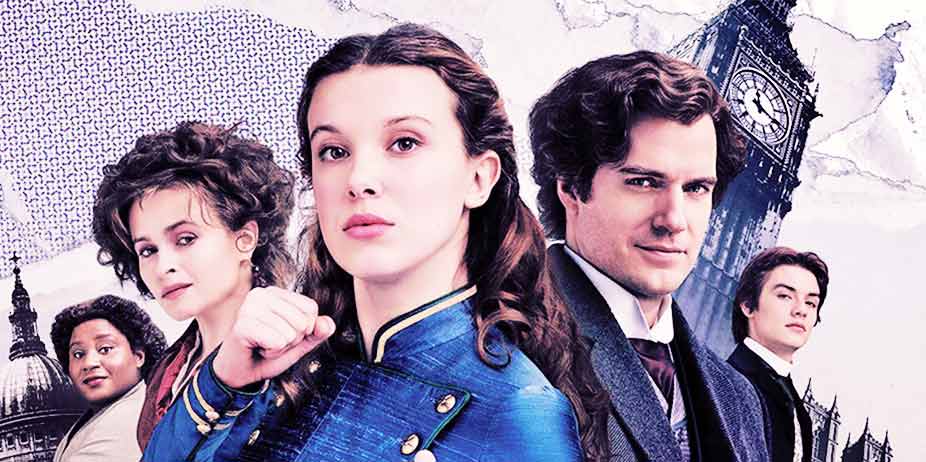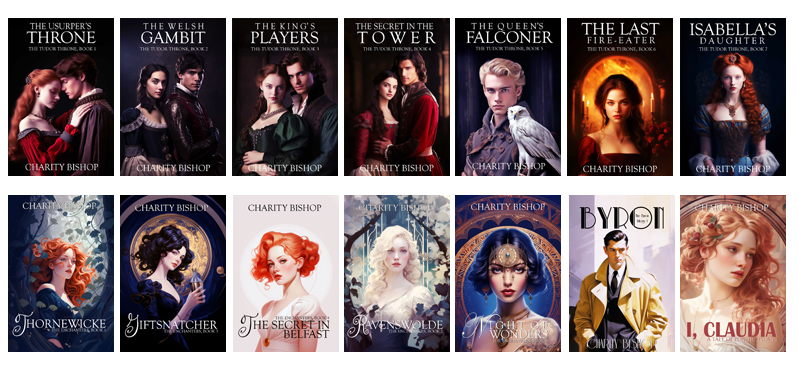
Enola Holmes 2 (2022)
Sherlock Holmes’ clever little sister is back in this delightful, funny, and charming sequel to the original film.
Bolstered by solving her first case, Enola (Millie Bobbie Brown) has set up a detective agency in the hope of rising out of her more famous big brother’s shadow, but unfortunately, no one takes her seriously—she’s either assumed to be the secretary or dismissed for being too young. She’s packing up her stuff to move out of her office when a child comes in to appeal for her help in finding her lost sister. Eager to take the case, Enola’s investigations lead her to a vaudeville show, a match factory where something has gone fishy, and then, once wanted by the police, to a high society ball, in a dreaded dress. Along the way, she runs into her brother (Henry Cavill), who is stumped and angry about making no progress on his theft case, and then afoul of a frightening police inspector (David Thewlis). She tries to deny her feelings for young Lord Tewkesbury (Louis Partridge), of course, while attempting to keep out of the police’s clutches.
Before the end of the two hours and fifteen minute film, Enola has also reunited with her mother (Helena Bonham-Carter), who is still blowing up post boxes for women’s suffrage (years ahead of the invention of the suffragette movement, but it’s so much fun, who cares?). She’s still breaking the fourth wall and talking to us, and her madcap mind is the same as ever (brilliant), but this story seems to move along better than the first film—aided by the fact that she doesn’t spend the majority of it avoiding her brother, but instead winds up working with Holmes to solve both their cases. It’s a lot of fun to see them in the same room, and to have her wander into 221 B Baker Street and complain about the state of things (“you should get a flat mate,” she tells him, “to keep you from doing… this”).
The pace is manic and moves back and forth between the past and the present, so it will take an attentive viewer to keep track of what’s happening –but it’s so cute and fun you won’t want to look at your phone in the first place. Cavil gets more space to breathe this time as Holmes and be ingenious in his own right. Though Enola saves the day, the film avoids the feminist trap of making her win every fight—she gets beat up aplenty by men twice her size, which is realistic. She tries to go at it on her own, and then decides (upon her mother’s advice) that everyone needs allies. The usual color-blind casting is in place, but it doesn’t stick out egregiously here. There are knife fights, thrilling horse chases, explosions, and a high-stakes conclusion with a fun introduction during the final credits. If I had one quibble, it’s that Sherlock Holmes shows up drunk, but he’s so much fun after that I can forgive that lapse in judgment. I loved how the film recons Moriarty and gives us a wink at Dr. Watson—as if setting up a third installment. I say, bring it on!
Sexual Content:
Flirtations, kissing, and a few low-cut gowns. Enola switches clothes with a boy, and he glances approvingly at himself in a dress.
Violence:
Two murders, which involve blood (on a woman’s dress and the hands of a girl who tries to help her; in a man’s ear). Explosions go off several times (with no casualties); a man throws a piece of wood into a carriage wheel, causing it to overturn the coach. Lots and lots of fights—men and women beat each other up, kick each other, knee each other in the groin, and punch each other in the face. Many of them are beat badly in the finale. To save her life, Enola gets a hook into a man and hoists him upward, where he slams his head into a crossbeam and falls to the ground with a splat.
